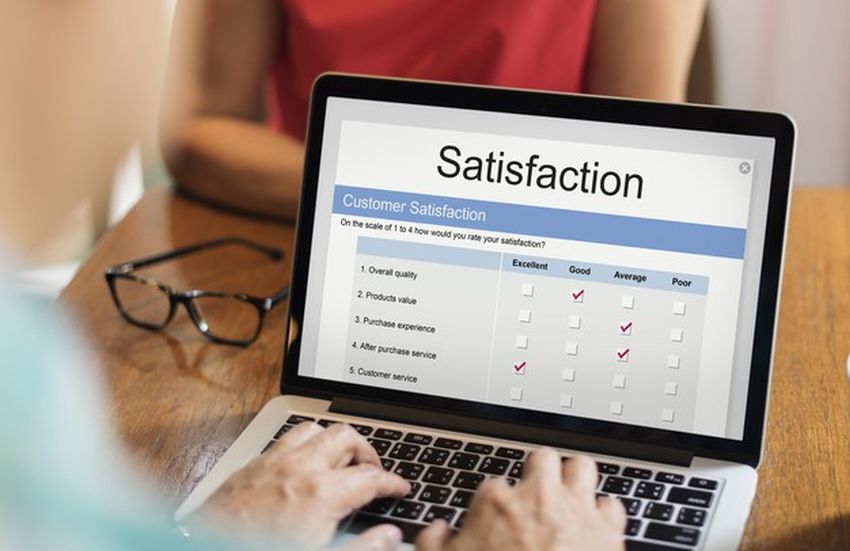If you want to get better response rates on your customer surveys, you need more than a wing and a prayer. You need a simple, intentional plan that allows you to reach people where they are with the right message at the right time and with as little friction as possible.
The Power of Customer Surveys
Many small business owners either don’t conduct customer satisfaction surveys, or don’t spend much time optimizing them to generate meaningful insights.
Before we discuss the specific ways you can achieve better response rates, let’s clarify why surveys matter so you can move them up your priority list. Here are a few key benefits:
- Measures success. A happy customer is a loyal customer. And a loyal customer is a more profitable customer. Thus customer satisfaction surveys are an excellent measure of success.
- Forecasts future success. You’ll generally find that high levels of customer satisfaction precede significant revenue growth. Thus, if your customers are really satisfied at the moment, you can anticipate future success.
- Identifies shortcomings. In addition to identifying the areas where you’re excelling, a good customer satisfaction survey will also show you where you’re coming up short. This provides an opportunity for future improvement.
- Shows you care. Discerning customers will see you asking for feedback and take it as a sign that you care. It makes you come across as much more genuine and customer-centric than the business that continues on its own path regardless of what others want or need.
Every business will discover unique benefits, but these four are pretty universal. Keep this in mind as you refine your approach.

img source: freepik.com
What You Need to Know About Response Rates
Let’s not make things any more complicated than they need to be. Your survey response rate can be calculated using the following formula:
Response Rate = [# of people who complete the survey] / [total # of people who took the survey] X 100.
Because this formula is so simple, there’s a tendency for people to overthink it. This inevitably leads to questions like, what’s the difference between response rate and completion rate?
While certainly related, your response rate is ultimately the percentage of people who complete the survey. It’s a measurement of the total number of people the survey was sent to. The completion rate is merely the percentage of people who finished the survey after starting. This latter metric is a useful gauge for how well your survey is designed and structured. (A low completion rate indicates something is off.)
Everyone wants to know what a “good” response rate is, but the only answer we can give you is “it depends.” In general, anything below 10 percent is considered pretty poor, while anything above 30 percent is exceptional. Most businesses are happy with somewhere between 20 and 30 percent (depending on how engaged their base is).
How to Get More Responses
If you’re struggling to get the sort of response rate you want/need, go back to the drawing board. There are plenty of different levers to pull, twist, and adjust. Here are some useful suggestions:

img source: freepik.com
-
Pursue the Right People
Your response rate will be heavily influenced by who you target. You can significantly improve your numbers by going after people who are squarely within your niche. (Think about factors like age, sex, occupation, location, and past purchase behavior.) It’s also wise to think through how you’re pursuing survey respondents.
One of the best ways to send surveys is through email. Tools like Delighted make it easy to send, measure, and improve CSAT surveys within a single platform. This is much easier than trying to piece data together from multiple sources.
-
Improve Email Deliverability
If you are sending out surveys via email, make sure you have a strong deliverability rating. If your deliverability is off, your survey will be sent straight to spam folders (which kills your response rate right out of the gates).
You can improve your sender reputation by sending from actual people at your business (rather than generic accounts like contact@website.com). It’s also important that you segment and clean your list regularly. This ensures you’re only sending to people who are likely to open the email in the first place.
-
Personalize the Approach
Personalize your communication with customers whenever possible. This includes emails, surveys, and follow-up contact. Something as simple as calling a customer by their name can dramatically improve your results (often by as much as 25 to 30 percent).

img source: freepik.com
-
Incentivize
If you’re having trouble getting people to respond to your surveys, you might benefit from offering incentives. The challenge is offering incentives in such a way that they don’t skew the results.
“While you want to increase responses, you don’t want customers hastily filling out your survey just for the reward. You want thoughtful, honest feedback so you can use it to improve their experience,” HubSpot explains.
When it comes to monetary incentives, consider small coupons and discounts. You should promise them at the beginning and deliver at the end. (This is known as a promissory incentive.) During the survey, stress the importance of answering honestly and let respondents know they’ll be judged on their thoughtfulness.
-
Keep it Short
Nobody has time for a 15- or 20-minute survey. You might even have trouble getting someone to stick around for five minutes. That’s why we recommend keeping things to no more than two or three minutes. It’s also wise to record partially completed surveys so that you can at least capture some of the data from those who abandon the survey prematurely.
Putting Feedback Into Action
A survey can’t be viewed as merely a measuring stick. While it’s certainly useful in this regard, the real power comes from how it transforms your business. In other words, what you do with it matters most.
Good feedback should translate into clear and decisive actions that improve your business, enhance customer satisfaction, and generate greater loyalty. All of these factors combine to produce higher revenue and greater profitability.



